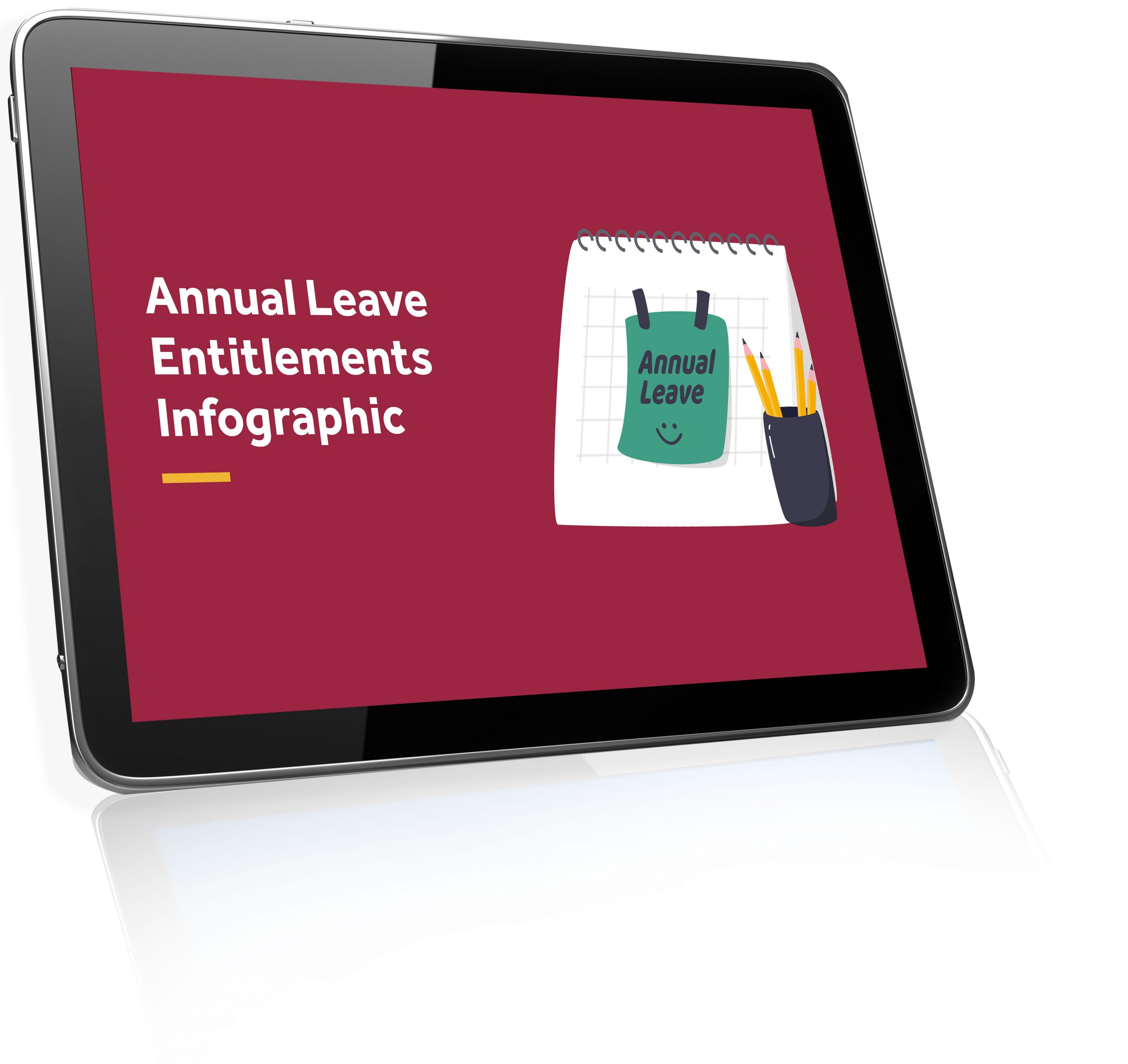
In today’s fast-paced industries, it’s more important than ever for employees to have time to rest and recharge. Full-time and part-time Australian workers currently have a statutory annual leave entitlement of 4 weeks. However, a movement to increase the minimum entitlement to 6 weeks is gathering momentum.
Countries including France, Sweden and Austria have an annual leave entitlement of 5 weeks, and employees who stay with an employer for more than a year receive 6 weeks. Meanwhile, Australia’s annual leave entitlement hasn’t increased since the 1970s.
Interviewed by Yahoo! News, Employsure’s Associate Director of Advice and Consultancy Stephen Roebuck claims increased leave allowances comes with advantages and disadvantages, with “more rested staff” normally being “more productive”, but “even slight increases in costs having a huge impact on small businesses”.
As Roebuck’s comments suggest, 6-week leave policies are a complex issue with plenty to unpack. Let’s dive in and take a closer look at the pros and cons.
The pros of 6 weeks
It may seem like a lot, but there are a host of benefits that come with increasing the leave entitlement to 6 weeks.
For employees
Reduced stress and burnout: Employees who have more time off are less likely to experience stress and burnout. This is because they have more time to rest, relax, and take care of their physical and mental health.
Improved well-being: Employees who have more time off are less likely to be absent from work due to illness and burnout. They’re also better able to take care of their families and other life responsibilities.
Increased morale and job satisfaction: Employees with a more generous leave allowance are more likely to have high morale and job satisfaction. This is because they feel like the employer is supporting a healthy work-life balance and values their happiness inside and outside of work.
For employers
Increased productivity: It’s no secret that employees who are well-rested are more productive. Workers who are fully recharged have the physical energy and mental focus needed to complete all kinds of tasks to a higher standard.
Reduced absenteeism: Offering staff enough leave to keep up with their commitments outside of work is an effective way to reduce absenteeism. LinkedIn reports 1 in 8 Australians take 1-4 “sickies” each year, at an average cost of $354 per occasion.
Attracting and retaining talent: Employees are more likely to be attracted to employers who offer generous leave policies. The mindset of “live to work” is fading these days, and prospective employees are increasingly drawn to leave packages that allow them to lead full and enjoyable lives outside of work.
Reduced turnover: When employees have six weeks of paid leave per year, they’re less likely to search for other job opportunities. This is because they’re more satisfied with their work-life balance and feel like their employer values their well-being. This means a reduction in the costs associated with recruiting and training new staff.
Improved company culture: Companies that offer generous leave policies tend to have happier, healthier staff and a more positive company culture. Employees will feel respected and valued by their employer, which means they tend to be more engaged.

Do you understand staff leave entitlements?
Understanding annual leave can be tricky! What are your staff’s leave entitlements? Do you pay your staff for a public holiday if they are on leave? What happens during a business shutdown? Get the facts so you can manage leave with confidence.
Download our FREE Annual Leave Entitlements Infographic today!
The cons of 6 weeks
It’s important to acknowledge that increasing the minimum leave entitlement does have its disadvantages, which need to be taken into serious consideration.
For employees
Difficulty finding coverage: Employees may have difficulty finding coverage for their annual leave, especially if they are in a key role. This can lead to stress and anxiety, as they may worry about letting their team down.
Increased workload on return: Employees who take extended leave may find that they have a lot of work to catch up on when they return. This can be stressful and overwhelming.
For employers
Increased costs: Naturally, offering 6 weeks of annual leave will increase the cost to employers. This may be a significant cost for small businesses.
Reduced productivity: Countering the concept of a rested and productive employee, employees being on leave can lead to reduced productivity (especially if there aren’t enough workers to cover for those who are away).
Disruption to workflow: Employees taking leave can disrupt the workflow of a business, especially if they are in a key role that other employees and departments depend on. This can be difficult to manage, especially for small businesses with limited resources.
Leave accrual: Employees accruing excessive amounts of unused leave can lead to leave liability. When an employee departs the business, their final pay will include any unused leave (calculated at their current pay rate, regardless of when it was accrued). In smaller businesses, this can create cash flow problems.
Implementing a 6-week annual leave policy
While offering employees 6 weeks of annual leave is not an obligation, many companies may choose to embrace a more generous leave policy. If you’re an employer who’s considering implementing a larger leave policy, there are a few things you can do to make the transition as smooth as possible.
You should start by communicating with your employees. Let them know about the policy you’re considering and get their feedback. This will help you to understand what’s important to your staff and make sure the changes are fair and equitable.
You should also make a plan for how to manage the new policy. It’s important to have an efficient system for employees to request leave and for managers to approve leave requests.
Finally, you may also need to make adjustments to your staff levels to ensure that there is always adequate coverage when employees are away from work.
With the right planning and measures, it is possible for employers to mitigate the risks of offering more annual leave while reaping the benefits of a workforce that’s rested and ready to perform.
Are you contemplating changing your leave policy? Employsure can guide you through your options and help you understand the implications. Call our FREE Advice Line on 1300 651 415 to get the facts and plan any changes with certainty.








